Comprehensive multi-omics analysis reveals the prognostic and immune regulatory characteristics of the PTPN family in osteosarcoma
- PMID: 40570022
- PMCID: PMC12200852
- DOI: 10.1371/journal.pone.0326872
Comprehensive multi-omics analysis reveals the prognostic and immune regulatory characteristics of the PTPN family in osteosarcoma
Abstract
Osteosarcoma is a highly aggressive bone tumor that primarily affects adolescents and young adults, posing significant challenges in therapeutic efficacy, prognostic assessment, and treatment strategies. This study investigates the oncogenic and immune regulatory roles of the PTPN family in osteosarcoma using a comprehensive multi-omics approach. We utilized transcriptomic data, single-cell RNA sequencing (scRNA-seq), and clinical information obtained from publicly available databases. Dimensionality reduction and clustering techniques were employed to subclassify immune cells and analyze the tumor microenvironment characteristics. We identified prognostic genes associated with the PTPN family and stratified osteosarcoma cases into distinct molecular subtypes using consensus clustering. A random forest model revealed that the PTPN family has a significant impact on prognosis and modulates key oncogenic pathways. Furthermore, we analyzed the role of the PTPN family in regulating immune cells and selected PTPN23 for experimental validation. This research not only enhances prognostic assessments in osteosarcoma but also establishes a foundation for personalized therapeutic interventions.
Copyright: © 2025 Long et al. This is an open access article distributed under the terms of the Creative Commons Attribution License, which permits unrestricted use, distribution, and reproduction in any medium, provided the original author and source are credited.
Conflict of interest statement
The authors have declared that no competing interests exist.
Figures
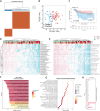
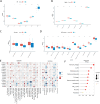


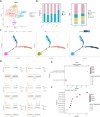
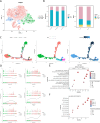
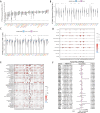

Similar articles
-
Multomic analysis reveals the potential of LAG3 as a prognostic and immune biomarker and its validation in osteosarcoma.Sci Rep. 2025 Jul 11;15(1):25158. doi: 10.1038/s41598-025-10290-w. Sci Rep. 2025. PMID: 40646089 Free PMC article.
-
Therapeutic implications of cancer-associated fibroblast heterogeneity: insights from single-cell and multi-omics analysis.Front Immunol. 2025 Jun 16;16:1580315. doi: 10.3389/fimmu.2025.1580315. eCollection 2025. Front Immunol. 2025. PMID: 40589759 Free PMC article.
-
Unraveling the role of GPCR signaling in metabolic reprogramming and immune microenvironment of lung adenocarcinoma: a multi-omics study with experimental validation.Front Immunol. 2025 Jun 6;16:1606125. doi: 10.3389/fimmu.2025.1606125. eCollection 2025. Front Immunol. 2025. PMID: 40547013 Free PMC article.
-
The safety and efficiency of photodynamic therapy for the treatment of osteosarcoma: A systematic review of in vitro experiment and animal model reports.Photodiagnosis Photodyn Ther. 2022 Dec;40:103093. doi: 10.1016/j.pdpdt.2022.103093. Epub 2022 Aug 27. Photodiagnosis Photodyn Ther. 2022. PMID: 36031143
-
Clinicopathologic significance and prognostic value of circRNAs in osteosarcoma: a systematic review and meta-analysis.J Orthop Surg Res. 2021 Oct 7;16(1):578. doi: 10.1186/s13018-021-02568-2. J Orthop Surg Res. 2021. PMID: 34620208 Free PMC article.
References
MeSH terms
Substances
LinkOut - more resources
Full Text Sources
Medical

